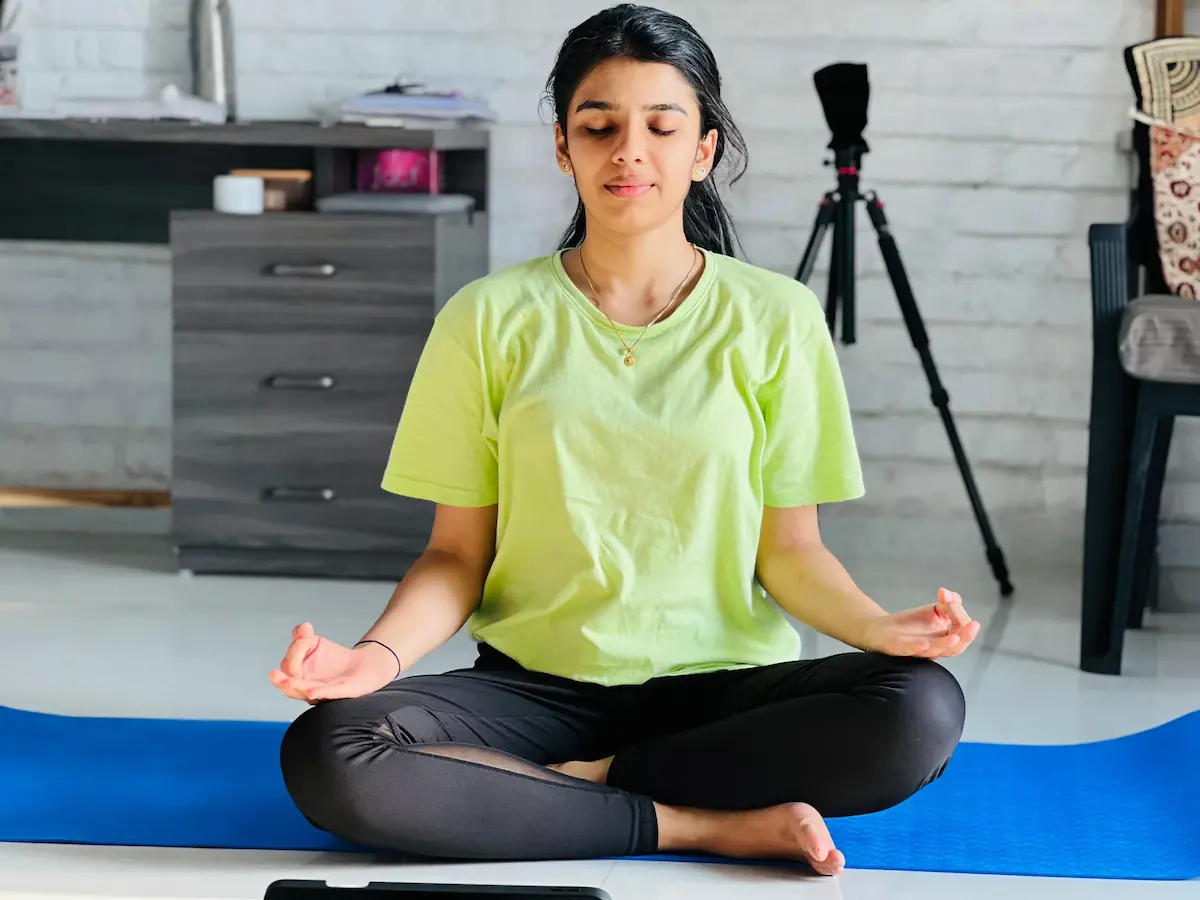Modern office life often means tight deadlines, endless virtual meetings, and hours on end in front of a screen. All these factors can pile up stress, leaving employees feeling burnt out and exhausted. But what if you could transform your workday with simple, powerful yoga practices without even leaving your desk?
In this guide, discover how corporate yoga can rejuvenate your body and mind, plus step-by-step instructions for the best office-friendly poses and breathing exercises.
Why Yoga for Corporate Professionals?

- Improves focus and mental clarity
- Reduces stress and anxiety
- Prevents burnout and fatigue
- Enhances team building
- Relieves back and neck pain
- Boosts energy and productivity
Top Office Yoga Poses (with Steps, Benefits & Tips)
1. Anulom-Vilom (Alternate Nostril Breathing)
How to Do It:
- Sit on your chair with a straight back, muscles relaxed.
- Close your eyes; take a few deep, natural breaths.
- Place your right thumb on your right nostril and close it.
- Inhale slowly through your left nostril; hold for 2 seconds.
- Close your left nostril with your index finger, release your right thumb, and exhale through your right nostril.
- Now inhale through your right nostril, close it, and exhale from your left.
- One cycle complete; repeat 10–15 rounds.
Benefits:
- Calms the nervous system and balances both brain hemispheres.
- Reduces stress, anxiety, and emotional imbalance.
Tips/Precautions:
- Practice on an empty stomach.
- Avoid if you have a cold or severe nasal congestion.
2. Kapalbhati (Skull-Shining Breathing)
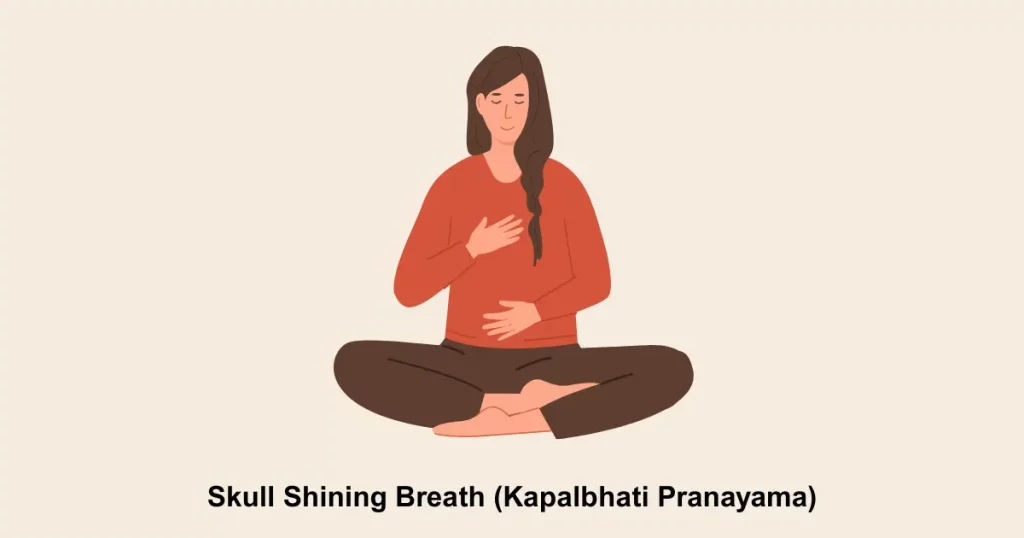
How to Do It:
- Sit upright with relaxed shoulders.
- Close your eyes; inhale deeply.
- Exhale forcefully through your nose, pulling in your stomach.
- Let inhalation happen naturally.
- Continue with 20–30 rapid exhalations; then rest.
Benefits:
- Boosts energy and mental clarity.
- Cleanses lungs and improves oxygen supply.
Tips/Precautions:
- Skip if you have high blood pressure or recent surgery.
- Start slow to avoid dizziness.
3. Bhastrika (Bellows Breath)
How to Do It:
- Sit comfortably, back straight.
- Inhale deeply through your nose, expanding your lungs.
- Exhale forcefully, pushing air out with quick bursts.
- Complete 10–15 rounds.
Benefits:
- Increases oxygen, clears the mind, reduces fatigue.
- Enhances focus and mental sharpness.
Tips/Precautions:
- Don’t rush breath should be steady, not strained.
- Avoid if you have heart or respiratory conditions.
4. Neck Rolls
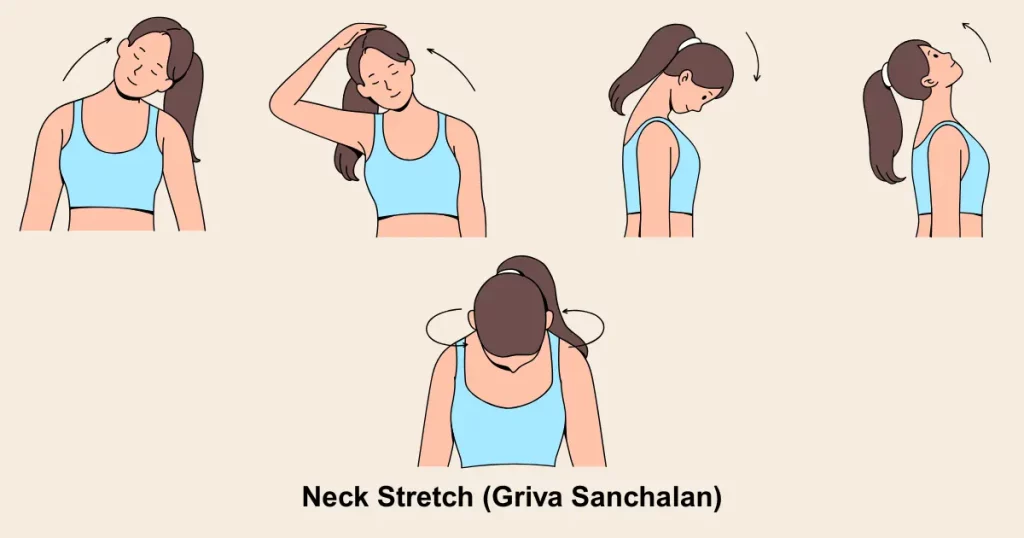
How to Do It:
- Sit or stand straight.
- Drop your head gently toward your chest.
- Roll your head clockwise for 5–10 circles.
- Repeat counterclockwise.
Benefits:
Tips/Precautions:
- Move gently never force the neck.
- Stop if you feel any pain or dizziness.
5. Shoulder Shrugs
How to Do It:
- Sit or stand, arms by your sides.
- Lift shoulders to your ears; hold 1–2 seconds.
- Lower and repeat 10–15 times.
Benefits:
- Eases shoulder and neck tension.
- Improves posture, counters slouching.
Tips/Precautions:
- Move slowly for best effect.
- Avoid if you have recent shoulder injuries.
6. Finger and Palm Stretch
How to Do It:
- Stretch one arm forward, fingers spread wide.
- Hold 5–10 seconds.
- For a deeper stretch, gently pull fingers back using your other hand; hold 15–20 seconds.
Benefits:
- Reduces risk of repetitive strain (e.g., carpal tunnel).
- Improves flexibility and blood flow.
Tips/Precautions:
- Don’t over-stretch; stop if you feel discomfort.
7. Tadasana (Seated or Standing Mountain Pose)
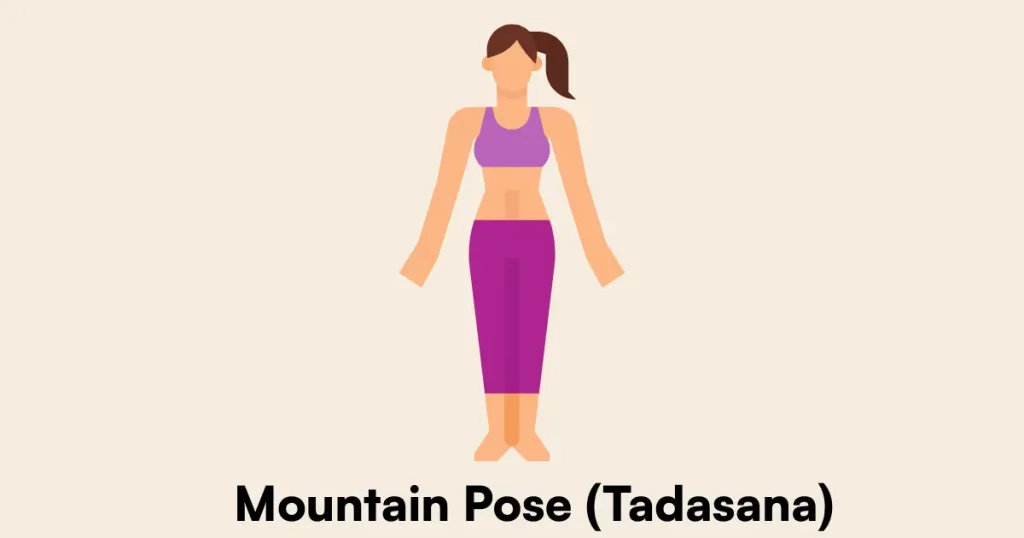
How to Do It:
- Sit tall (or stand), interlock fingers, and stretch arms overhead, palms up.
- Engage your spine; inhale deeply.
- Hold the stretch for 10–15 seconds, then release. Repeat 10–12 times.
Benefits:
- Improves posture and stretches the spine.
- Boosts energy and reduces back pain.
Tips/Precautions:
- Avoid overarching your back.
8. Paschimottanasana (Seated Forward Bend, Desk Version)

How to Do It:
- Sit straight with feet flat.
- Inhale, lengthen your spine.
- Exhale, lean forward from hips, chest toward thighs.
- Rest hands on legs or feet, relax neck and shoulders.
- Hold for 5–10 breaths, slowly rise.
Benefits:
- Relieves lower back tension.
- Stretches spine and calms the mind.
Tips/Precautions:
- Don’t bounce or force the stretch.
9. Ardhamatsyendrasana (Seated Spinal Twist)
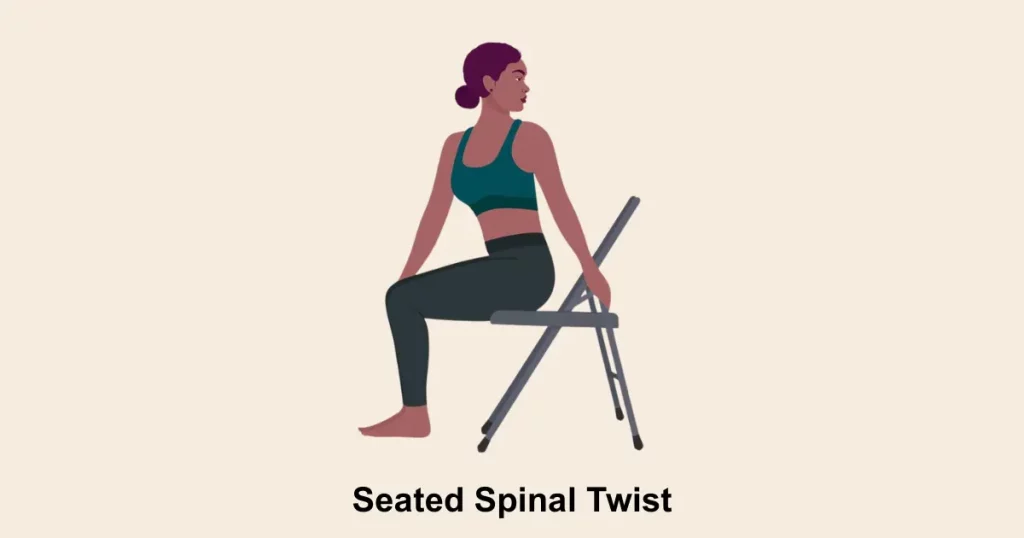
How to Do It:
- Sit with feet flat, back tall.
- Rotate upper body to the right, right arm on chair back, left hand outside right thigh.
- Hold for 4–5 breaths, return center, switch sides.
Benefits:
- Releases spine stiffness, improves digestion.
- Refreshes focus and concentration.
Tips/Precautions:
- Avoid deep twists if you have back injuries.
10. Garudasana (Eagle Pose)
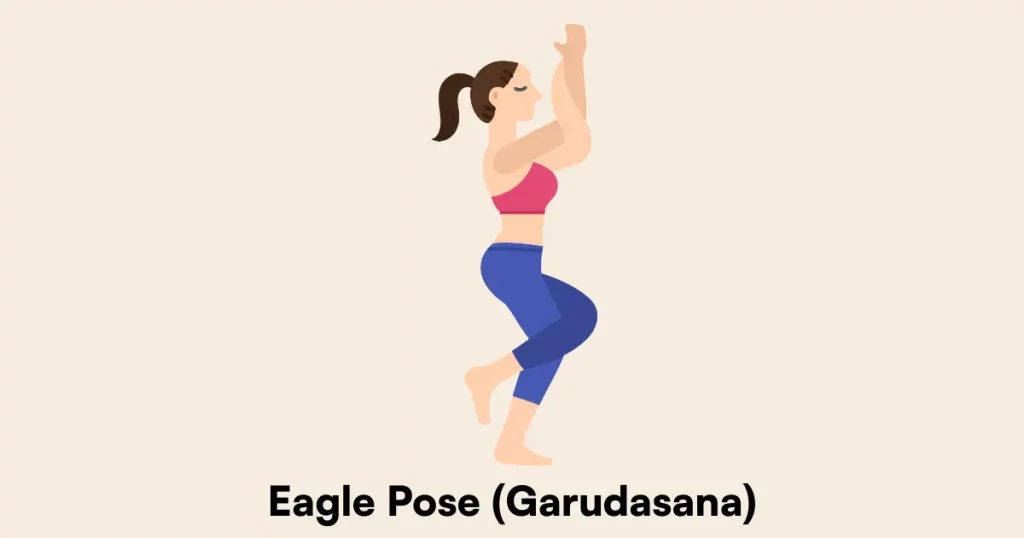
How to Do It:
- Sit or stand straight, stretch arms forward.
- Cross right arm over left; bend elbows and bring palms together if possible.
- Lift elbows slightly, hands away from the face.
- Hold for 4–5 breaths; release and switch sides.
Benefits:
- Relieves shoulder and upper back tension.
- Improves circulation and focus.
Tips/Precautions:
- Only cross arms as far as comfortable.
11. Uttanasana (Desk Forward Bend)
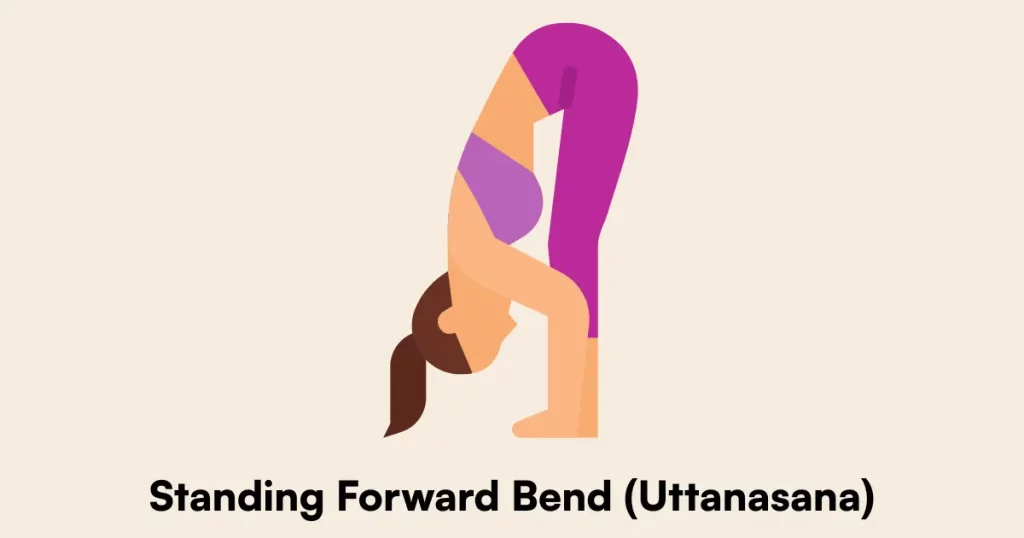
How to Do It:
- Stand with feet hip-width or sit on your shins.
- Place hands on desk or chair back for support.
- Step back; bend forward from hips, keep back flat.
- Feel a stretch in hamstrings and spine; hold a few breaths.
Benefits:
- Stretches back and hamstrings.
- Calms the mind, relieves anxiety.
Tips/Precautions:
- Avoid if you have acute back pain.
- Why Your Mind Wanders During Meditation
- Beginner Yoga Poses for Stress Relief
- Yoga vs Gym: Which is Better for Mental Health?
Integrating Yoga Into Your Workday
Morning Routine
- Wake 15 minutes early for gentle stretches.
- Do 8–10 minutes of Surya Namaskar.
- Practice simple breathing techniques before leaving for work.
Break Time
- Stretch every 1–2 hours or after long meetings.
- Take 5-minute desk yoga or breathwork breaks.
- Use pranayama to reset before big tasks.
Evening Routine
- End your workday with meditation or gentle stretches.
- Close with calming breathing exercises to unwind.
Use of Health Trackers
- Fitness bands and smartwatches can track stress, breathing, and movement.
- Use them to receive reminders for movement and relaxation.
Expert Tips & Precautions
- Start slow and listen to your body; never push beyond comfort.
- Wear comfortable clothing that allows movement even formal office wear can work.
- Stay hydrated and take regular breaks from the screen.
- Avoid poses or techniques that worsen pain or discomfort consult a doctor if you have health concerns.
Frequently Asked Questions (FAQs)
1. Can I practice corporate yoga in formal work clothes?
Absolutely! Most desk yoga and breathing exercises require minimal movement and no special attire.
2. How often should I do office yoga?
Aim for brief sessions (3–5 minutes) every 1–2 hours, and dedicate longer time (10–15 minutes) at the start or end of the day.
3. Do I need special equipment?
No most corporate yoga poses use only your chair or desk.
4. What if my office space is small?
Many poses and stretches can be done seated or standing in small spaces.
5. Is it safe for everyone?
Most poses are gentle and safe. People with recent injuries, surgeries, or chronic illnesses should consult a healthcare provider before starting a new routine.
6. Does yoga really reduce office stress?
Yes! Studies show yoga significantly reduces stress, anxiety, and even physical discomfort among office workers by calming the nervous system and improving focus.
Practicing corporate yoga is a simple yet powerful way to recharge, focus, and manage stress even during your busiest workday. So, roll your shoulders, take a deep breath, and bring wellness to your workplace, one pose at a time.
If you’re ready to kickstart your wellness journey, consider structured office yoga programs or join a virtual class to stay motivated!

